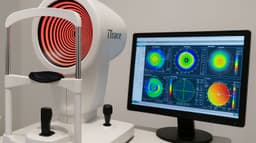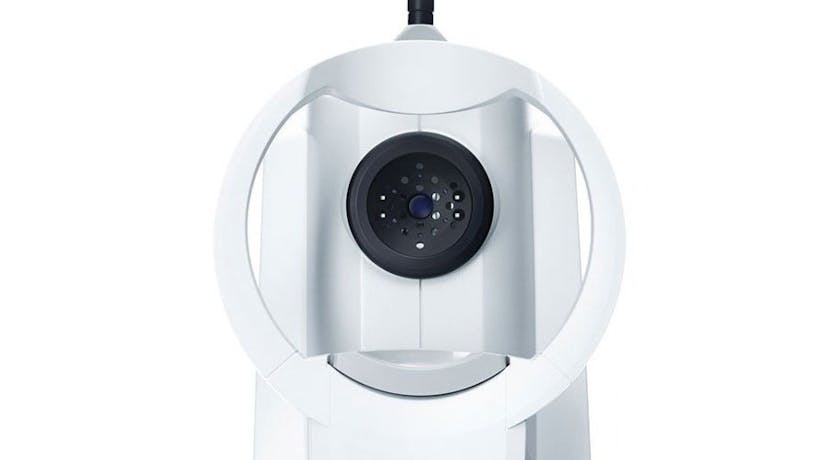
Amblyopia Unmasked: Understanding and Treating Lazy Eye
Lazy eye, medically known as amblyopia, is a vision disorder characterised by reduced visual acuity in one eye. This condition occurs when the brain receives conflicting visual signals from the eyes, typically due to misalignment (strabismus) or a significant difference in refractive error (such as nearsightedness, farsightedness, or astigmatism) between the two eyes.
In amblyopia, the brain begins to favour the stronger eye and gradually suppresses or "ignores" the visual input from the weaker eye. This leads to a decline in visual acuity in the affected eye, which can result in reduced depth perception and overall visual function.
Amblyopia is considered a neurodevelopmental condition, and it is most commonly diagnosed in early childhood. However, it can also develop in older children and even adults if left untreated.
Prevalence And Demographics Of Amblyopia
Amblyopia is a relatively common vision disorder, affecting an estimated 2-3% of the global population. It is one of the leading causes of visual impairment in children.
The prevalence of amblyopia can vary by region and is influenced by factors such as access to healthcare, early vision screening programs, and awareness among parents and caregivers. Additionally, certain risk factors, including a family history of amblyopia, premature birth, and conditions like strabismus or significant refractive errors, can increase the likelihood of developing amblyopia.
Amblyopia does not discriminate based on gender or ethnicity, and it can occur in individuals of all backgrounds. However, early detection and intervention are crucial for maximising the potential for visual improvement, particularly in children.
Causes Of Lazy Eye (Amblyopia)
Amblyopia, commonly known as lazy eye, can arise from conditions such as strabismus (misaligned eyes) and significant refractive errors, where the brain receives conflicting visual signals, leading to reduced visual acuity in one eye. Let’s take a closer look.
Strabismus (Misaligned Eyes)
Strabismus is a condition characterised by an imbalance in the positioning of the eyes. This misalignment can be constant or intermittent, and it may cause the eyes to turn in (esotropia), out (exotropia), up (hypertropia), or down (hypotropia). When one eye consistently deviates from its normal alignment, the brain may receive conflicting visual signals, leading to the development of amblyopia in the weaker eye.
Significant Refractive Errors
Refractive errors refer to conditions in which the shape of the eye causes light to be improperly focused on the retina, leading to blurred vision. These errors include myopia (nearsightedness), hyperopia (farsightedness), and astigmatism. When one eye has a significantly different refractive error compared to the other, the brain may favour the eye with clearer vision, leading to amblyopia in the weaker eye.

Genetic and Environmental Factors Contributing to Amblyopia
Genetic Predisposition
There is evidence to suggest that a genetic component may play a role in the development of amblyopia. Children with a family history of amblyopia, strabismus, or significant refractive errors may have an increased risk of developing the condition. Genetic factors can influence the way the visual system develops and processes information.
Early Childhood Development
Amblyopia is most commonly diagnosed in early childhood, during the critical period of visual development. If visual issues like strabismus or refractive errors are not detected and addressed early, the brain may adapt to favour one eye over the other, leading to amblyopia.
Lack of Early Vision Screening
In some cases, amblyopia may go undetected if there is a lack of early vision screening or comprehensive eye exams for children. Routine eye examinations, especially in infancy and early childhood, are crucial for identifying and addressing potential vision issues.
Environmental Stimuli and Stimulation
Adequate visual stimulation during early childhood is important for the development of the visual system. Conditions that limit visual input, such as cataracts or other obstructions, can contribute to the development of amblyopia if not addressed promptly.
Compliance with Treatment
Adherence to prescribed treatments, such as patching or atropine therapy, is essential for the success of amblyopia treatment. Lack of compliance can hinder visual improvement.
Moreover, while genetic and environmental factors can contribute to the development of amblyopia, early detection and intervention remain key in preventing and effectively managing the condition.
What Treatments Are Available For Lazy Eye?
Addressing lazy eye, or amblyopia, requires a tailored and multi-faceted approach aimed at improving visual acuity and coordination in the affected eye. With early detection and timely intervention, significant progress can be made in enhancing overall vision and quality of life. From traditional methods like patching and corrective lenses to innovative therapies such as vision training and atropine therapy, a range of treatment options are available. By understanding the various treatment modalities, individuals and caregivers can work in collaboration with eye care professionals to embark on a journey toward improved vision and visual well-being.
Here is a list of modern treatments:
- Patching
- Patching involves covering the stronger eye with an eye patch for a specified period each day. This encourages the weaker eye to work harder and improve visual acuity.
- Atropine Therapy
- Atropine eye drops are used to temporarily blur the vision in the stronger eye. This encourages the weaker eye to become more active and helps balance visual input.
- Vision Therapy
- Vision therapy involves a series of exercises and activities designed to improve visual skills, eye coordination, and depth perception.
- Corrective Lenses
- Prescription eyeglasses are used to correct refractive errors, such as nearsightedness, farsightedness, or astigmatism, which may contribute to amblyopia.
- Bangerter Filters
- These semi-transparent filters are placed on the glasses of the stronger eye to blur vision and promote visual development in the weaker eye.
- Pleoptic Training
- Pleoptic training involves specialised visual exercises aimed at improving visual perception and coordination.
- Dichoptic Training
- This therapy involves using special computer programs or apps that present different images to each eye, encouraging them to work together.
- Orthoptics
- Orthoptic exercises focus on training eye muscles to work together properly, improving eye alignment and coordination.
- Occlusion Glasses
- These glasses have a built-in electronic shutter that alternately blocks vision in each eye, stimulating both eyes to work together.
- Neurofeedback
- This technique involves training the brain to improve visual processing and coordination.
- Surgery (in cases of strabismus)
- Strabismus surgery may be considered if misalignment of the eyes is a contributing factor to amblyopia.
- Continued Monitoring and Follow-Up
- Regular eye examinations and follow-up appointments with an eye care professional are important to track progress and adjust treatment plans as needed.

A specific treatment plan for an individual with lazy eye will be determined by an eye care professional based on factors such as the underlying cause, age, and severity of the condition. Treatment success is often best achieved through early intervention and consistent adherence to the prescribed therapy.
Living With A Lazy Eye
Living with a lazy eye can have varying effects on individuals depending on the severity and underlying causes. In terms of daily life, amblyopia may influence several aspects, including:
Academic Performance
In children, amblyopia can impact reading, writing, and overall academic achievement. Difficulty with tasks that require visual acuity, such as reading from a chalkboard or textbook, may be encountered.
Social Interactions
Amblyopia may affect how individuals perceive and interact with their environment. This can potentially influence social interactions, particularly in situations where clear visual input is essential for activities like team sports or group play.
Depth Perception
Reduced depth perception, a common consequence of amblyopia, may affect activities that rely heavily on judging distances, such as sports or driving.
Occupational Challenges
In adulthood, amblyopia can impact various professions that require precise visual acuity, such as certain careers in healthcare, aviation, or certain technical fields.
Recreational Activities
Certain recreational activities, particularly those involving hand-eye coordination, may be affected. Activities like playing sports or engaging in hobbies that require detailed visual focus may present challenges.
Tips And Strategies To Optimise Visual Function
Regular Eye Exams
Routine eye examinations are crucial for individuals with amblyopia to monitor their visual health and address any changes promptly.
Adherence to Treatment
Consistent adherence to prescribed treatments, such as patching, atropine therapy, or vision exercises, is essential for maximising visual improvement.
Optimal Lighting Conditions
Ensure that the environment is well-lit to aid in visual clarity. Avoiding glare and excessive shadows can be particularly helpful.
Use of Corrective Lenses
Wearing the appropriate prescription glasses or contact lenses can help compensate for any refractive errors and enhance visual acuity.
Compensatory Techniques
Developing compensatory strategies, such as improving reliance on the stronger eye while still acknowledging input from the amblyopic eye, can aid in day-to-day tasks.
Utilising Assistive Technology
Consider using assistive devices or technology, such as magnifiers or screen readers, to enhance visual accessibility for reading or digital tasks.
Awareness and Advocacy
Being aware of one's visual limitations and advocating for necessary accommodations in educational or professional settings can help create an inclusive environment.
Seeking Support and Resources
Connecting with support groups, healthcare professionals, and organisations specialising in vision care can provide valuable guidance, resources, and a sense of community.

Myths And Misconceptions
Amblyopia is most effectively treated during childhood, it is not solely a paediatric condition. Contrary to popular belief, amblyopia can be treated in adulthood, albeit with varying degrees of success. Early intervention remains crucial for optimal results, but even individuals who have reached adulthood can benefit from targeted therapies and vision training. Additionally, it's important to understand that while amblyopia can be significantly improved with appropriate treatment, the term 'cure' may not always apply. Rather, treatment aims to enhance visual function and promote better coordination between the eyes. By dispelling these myths, we empower individuals of all ages to seek the necessary care and take proactive steps toward improving their vision.
Our Top 3 Myths
- 1: Amblyopia Only Affects Children
- While amblyopia is most effectively treated during childhood, it can also be addressed in adulthood.
- 2: Amblyopia Cannot Be Treated in Adulthood
- Early intervention yields the best results, targeted therapies and vision training can still be beneficial for adults with amblyopia.
- 3: Amblyopia Can Always Be "Cured"
- While treatment can lead to significant improvement, the term "cure" may not always apply. The goal is to enhance visual function and coordination between the eyes.
Lazy Eye FAQ’s
What is the main cause of a lazy eye?
The main cause of a lazy eye, medically known as amblyopia, is a disruption in the normal development of vision during early childhood. This often occurs due to factors such as strabismus (misaligned eyes), where the eyes do not align properly, or significant differences in refractive error between the two eyes, leading to one eye receiving clearer visual input than the other. As a result, the brain begins to favour the stronger eye, leading to suppressed visual input from the weaker eye and subsequent reduction in visual acuity. Early detection and intervention are crucial in addressing the underlying causes and maximising the potential for visual improvement in individuals with amblyopia
How do you know if you have a lazy eye?
Detecting a lazy eye, or amblyopia may involve recognising certain signs and symptoms. These can include reduced visual acuity in one eye, difficulty with depth perception, or the perception of one eye appearing to wander or turn in a different direction. In children, observing behaviours like squinting, closing one eye, or tilting the head to one side while focusing on objects may also indicate a potential issue. It's important to undergo comprehensive eye examinations, especially during early childhood, as eye care professionals are trained to identify amblyopia through visual acuity testing and other specialised assessments. Early detection and timely intervention are key in effectively managing and improving vision in cases of amblyopia.
Is having a lazy eye considered a disability?
Having a lazy eye is typically considered a visual impairment rather than a disability. While it may affect visual acuity in one eye, it does not necessarily impair a person's overall ability to function in their daily life. However, in some cases where amblyopia is severe or accompanied by other eye conditions, it may meet the criteria for legal blindness or visual impairment according to specific regulations or definitions set forth by certain organisations or government agencies. It's important to note that the impact of amblyopia can vary from person to person, and individuals with this condition often lead full and productive lives with appropriate interventions and accommodations.
Does a Lazy eye get worse with age?
In general, a lazy eye does not typically worsen with age on its own. However, the severity of amblyopia and its impact on vision can vary depending on factors such as the underlying cause, early intervention, and treatment adherence. Without appropriate treatment, amblyopia may persist or become more noticeable over time. Additionally, other age-related vision changes, such as presbyopia (difficulty focusing on close objects), may coexist with amblyopia and affect overall visual function. Therefore, individuals with amblyopia must continue regular eye examinations throughout their lives to monitor their vision and receive any necessary interventions or adjustments to their treatment plans.
Can you drive with a lazy eye?
Whether an individual with a lazy eye or amblyopia can drive largely depends on the severity of their condition and their ability to meet the visual requirements for driving set forth by their local jurisdiction. In many places, the minimum visual acuity standards for obtaining a driver's licence must be met with or without corrective lenses. If the lazy eye significantly impairs visual acuity and cannot be adequately corrected, it may pose challenges for meeting these requirements. Individuals with amblyopia need to consult with an eye care professional and their local licensing authority to determine if they meet the necessary visual standards for safe driving. Additionally, in some cases, specialised vision assessments or examinations may be required to assess driving eligibility.
When is it too late to fix a lazy eye?
While early intervention yields the best results, it is not necessarily "too late" to address a lazy eye, or amblyopia, in adulthood. The potential for improvement may vary depending on factors such as the individual's age, the underlying cause and severity of amblyopia, and their response to treatment. While treatment outcomes may be more limited in adulthood compared to childhood, targeted therapies, vision training, and other interventions can still be beneficial. Adults with amblyopia need to consult with an eye care professional who can assess their specific situation and recommend appropriate treatment options to optimise their visual function.
What happens if you don’t treat a lazy eye?
If a lazy eye is left untreated, the visual acuity in the weaker eye is likely to remain significantly impaired. The brain will continue to favour the stronger eye, leading to a persistent imbalance in visual input. This can result in long-term consequences, including reduced depth perception, challenges in activities that require binocular vision, and potential difficulties in tasks like reading or driving. Additionally, untreated amblyopia may lead to a decreased quality of life, particularly in situations where clear vision in both eyes is essential. While treatment outcomes may be more limited in adulthood compared to childhood, early intervention remains crucial in maximising the potential for visual improvement.
Find out more by Speaking to our team









